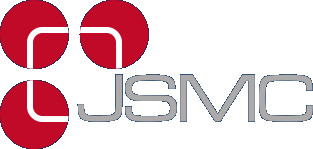Alumni
Dr. rer. nat. Daniela Freihorst
Microarray analyses and new pheromone receptors in Schizophyllum commune
Friedrich Schiller University
Institute of Microbiology - Microbial Communication
Dr. rer. nat. Johannes Frenkel
Struktur und Funktion von Sexualpheromonen der Diatomee Seminavis robusta
Friedrich Schiller University
Institute for Inorganic and Analytical Chemistry
Dr. rer. nat. Adrian Frister
PI3K gamma as a mediator of septic encephalopathy
Dr. rer. nat. David Fürst
Influence of microorganisms on the phytoremediation-potential of different plants on heavy-metal contaminated soils
Friedrich Schiller University
Institute of Microbiology - Microbial Communication
Dr. rer. nat. Ramses Gallegos Monterrosa
Cellular interactions in single- and mixed-species biofilms of Bacillus subtilis
Dr. rer. nat. Enrico Garbe
Transcriptional control of environmental pH modulation in the fungal pathogen Candida albicans
ZIK Septomics
Host Fungal Interfaces
Dr. rer. nat. Sarahi Garcia
Interaction of freshwater Actinobacteria with other microbes and the environment
Dr. rer. nat. Alessio Garrone
NADPH: Protochlorophyllide Oxidoreductase (POR) - Advanced insight into the Catalytic Mechanism of the two Plant lsozymes POR A and POR 8
Institute of Physical Chemistry
Molecular Photonics
Dr. rer. nat. Marie Goldmann (née Röcker)
Identification of immunogenic components of Aspergillus fumigatus for vaccine development
Leibniz Institute for Natural Product Research and Infection Biology – Hans Knöll Institute (HKI)
Molecular and Applied Microbiology
Dr. rer. nat. Sagar Gore
Pattern recognition methods for prediction of chemical structure of fungal secondary metabolites
Friedrich Schiller University
Pharmaceutical Microbiology
Dr. rer. nat. Dennis Görlich
Systems Theory of Microbial Communication
Dr. rer. nat. Christina Große
Interaction of Chlamydia trachomatis with the host cell MHC class I antigen presentation pathway during active and persistent infection
Dr. rer. nat. Katharina Grosser
Investigation of the surface chemistry of marine algae: ecological interactions and chemical responses
Friedrich Schiller University
Institute for Inorganic and Analytical Chemistry
Dr. rer. nat. Huijuan Guo
Isolation, purification, and structural elucidation of active compounds from the tissue of insect
Dr. rer. nat. Matthias Händel
Microbially mediated neoformation of iron- and manganese nanoparticular geosorbents: A spectro-
Friedrich Schiller University
Hydrogeology
Dr. rer. nat. Benjamin Hanf
Cryo-stress of filamentous fungi
Leibniz Institute for Natural Product Research and Infection Biology – Hans Knöll Institute (HKI)
Molecular and Applied Microbiology
Dr. rer. nat. Christoph Heddergott
Secretome Analysis / pathogenicity mechanisms of Arthroderma benhamiae
Leibniz Institute for Natural Product Research and Infection Biology – Hans Knöll Institute (HKI)
Molecular and Applied Microbiology
Dr. rer. nat. Daniel Heinrich (ne Raszkowski)
Evolution of glorin-based intercellular communication in social amoebae
Friedrich Schiller University
Pharmaceutical Biology
Dr. rer. nat. Sundar Hengoju
A droplet microfluidic system with integrated optical fibers for multi-parametric analysis of microbiological samples
Leibniz Institute for Natural Product Research and Infection Biology – Hans Knöll Institute (HKI)
Bio Pilot Plant
Dr. rer. nat. Catarina Henke
Ectomycorrhizal signaling
Friedrich Schiller University
Institute of Microbiology - Microbial Communication





